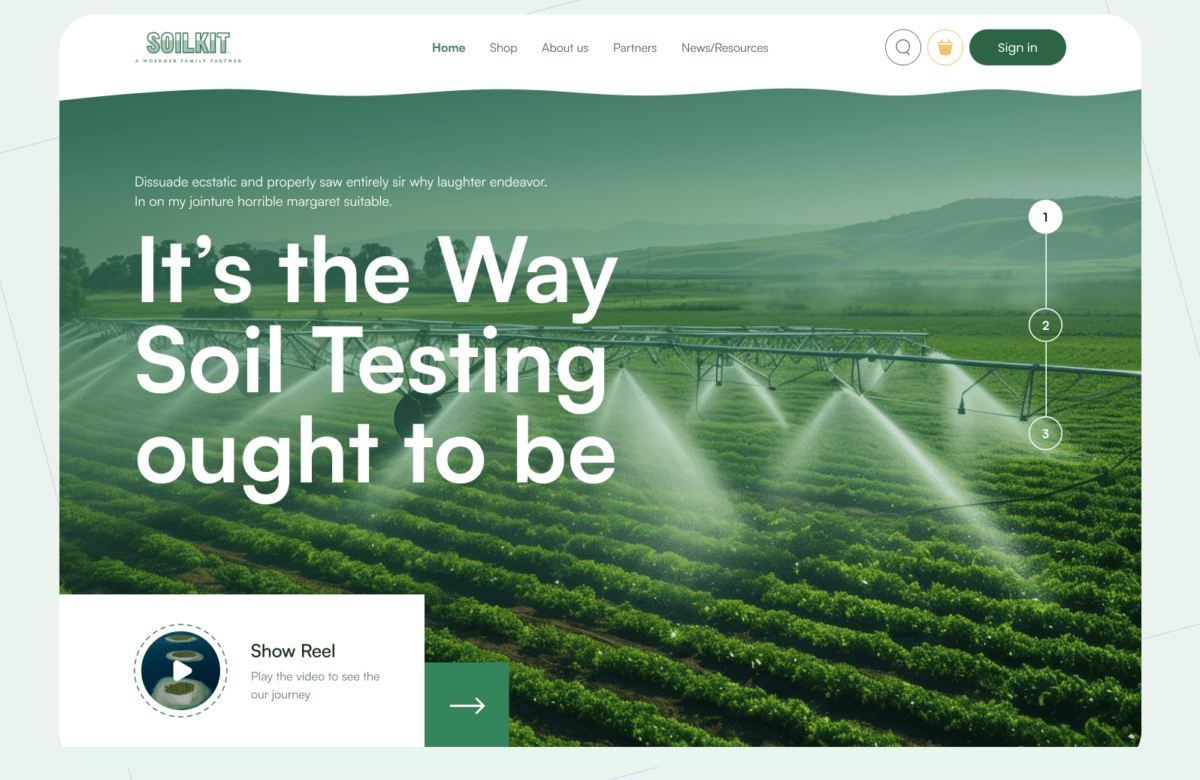Generative AI, a subset of artificial intelligence, holds immense potential in various fields such as content creation, design, and even healthcare. It refers to systems that can autonomously produce content such as images, text, or music, often mimicking human-like creativity. As these systems become more prevalent, the role of User Experience (UX) in shaping user interactions with Generative AI is increasingly crucial.
In recent years, Generative AI has gained traction due to advancements in deep learning and neural network architectures. For instance, OpenAI’s GPT (Generative Pre-trained Transformer) models have demonstrated remarkable capabilities in generating human-like text, while systems like DALL·E can generate images from textual descriptions. According to a report by Research and Markets, the global AI market is projected to reach $309.6 billion by 2026, with Generative AI playing a significant role in this growth.
Understanding Key Concepts in UX Design for Generative AI:
A. User Interactions and Behaviors in AI-driven Environments
User interactions with Generative AI systems differ from traditional interfaces due to the autonomous nature of content generation. Understanding user behaviors in these environments is crucial for designing intuitive and effective user experiences. For example, in a study by Adobe, it was found that 76% of consumers prefer personalized content tailored to their interests and preferences. UX designers must leverage insights from user research and behavior analysis to create engaging experiences that resonate with users.
B. Context Bundling and User Curation for Personalized Experiences
Context bundling involves simplifying interactions by combining related information into a single command or action. This approach addresses the challenge of conveying complex instructions to achieve desired outcomes, enhancing efficiency and user satisfaction. For instance, platforms like Spotify use AI algorithms to bundle user preferences and listening history to provide personalized music recommendations. Similarly, Adobe’s Sensei leverages context bundling to streamline workflows and enhance creative productivity for users.
C. Building Trust and Transparency
In AI Interactions
Trust is a critical factor in user acceptance and adoption of AI-driven systems. Transparency in AI algorithms and decision-making processes is essential for building user trust and confidence. According to a survey by PwC, 65% of consumers cite trust as a key factor when interacting with AI systems. UX designers must prioritize transparency and provide users with insights into how AI algorithms generate content or make recommendations. For example, Google’s AI Principles emphasize transparency, accountability, and fairness in AI development and deployment.
Designing for Trust and Transparency:
A. Addressing User Concerns about Privacy and Data Usage
Privacy and data security are paramount concerns for users interacting with AI-driven systems. UX designers must prioritize safeguarding user data and providing clear information about data usage practices. According to a survey conducted by Deloitte, 91% of consumers believe it’s important to have control over their personal information. Design strategies such as explicit consent mechanisms, transparent data policies, and user-friendly privacy settings can help build trust and reassure users about the safety of their data.
B. Strategies for Enhancing Transparency in AI Algorithms
Transparency in AI algorithms is essential for users to understand how decisions are made and content is generated. UX designers can employ various strategies to enhance transparency, such as providing explanations or visualizations of AI processes. For example, platforms like Netflix use AI-driven recommendation algorithms to personalize content for users. By transparently displaying how recommendations are generated based on user preferences and viewing history, Netflix builds trust and enhances the user experience.
C. Leveraging User Feedback Mechanisms to Build Trust
User feedback mechanisms play a crucial role in iteratively improving AI-driven systems and addressing user concerns. UX designers should implement feedback loops that allow users to provide input and suggestions for enhancing the system’s performance. For instance, Amazon’s Alexa continuously learns from user interactions and feedback to improve its natural language understanding and responsiveness. By actively soliciting and responding to user feedback, AI systems can adapt and evolve to better meet user needs, thereby fostering trust and engagement.
Best Practices for UX Designers in Generative AI:
A. Crafting Intuitive and User-Friendly Interfaces
UX designers should prioritize designing interfaces that are intuitive and easy to use, even for users with limited technical knowledge. Clear navigation, intuitive controls, and informative feedback can help guide users through the interaction process seamlessly. For example, Adobe XD provides a user-friendly interface for designing and prototyping digital experiences, with features such as drag-and-drop functionality and real-time collaboration to enhance usability.
B. Incorporating User Interaction
Design Principles
User interaction design principles such as consistency, feedback, and affordances are essential for creating engaging and effective user experiences in Generative AI systems. UX designers should ensure consistency across the interface, provide timely feedback on user actions, and make interactive elements intuitive and discoverable. For instance, Google’s Material Design system offers guidelines and components for creating cohesive and user-friendly interfaces across different platforms and devices.
C. Showcasing UX Portfolios and Online Courses for Skill Development
Building a strong portfolio and continuously honing UX design skills are crucial for success in the field of Generative AI. UX designers should showcase their work in a portfolio that highlights their expertise, creativity, and problem-solving abilities. Additionally, participating in online courses and workshops can help UX designers stay updated on industry trends and technologies. Platforms like Coursera and Udemy offer a variety of UX design courses covering topics such as user research, prototyping, and usability testing, providing valuable resources for skill development and career advancement.
Collaborating with Design Agencies and Industry Professionals
A. Partnering with Design Agencies for UX/UI Integration
Collaborating with design agencies can provide valuable expertise and resources for integrating UX/UI design principles into Generative AI systems. Design agencies often have multidisciplinary teams with specialized skills in user research, interaction design, and visual aesthetics. By partnering with design agencies, organizations can leverage their knowledge and experience to create compelling and cohesive user experiences. For example, companies like IDEO and Frog Design specialize in human-centered design methodologies and have extensive experience in designing innovative digital products and services.
B. Role of UX Designers in Interdisciplinary Teams
UX designers play a crucial role in interdisciplinary teams working on Generative AI projects. They act as advocates for the user, ensuring that design decisions are grounded in user needs and preferences. UX designers collaborate closely with data scientists, engineers, and product managers to translate user insights into actionable design solutions. By fostering collaboration and communication across diverse disciplines, UX designers can contribute to the successful development and implementation of Generative AI systems.
C. Networking Opportunities and Resources for UX Professionals
Networking with industry professionals and participating in relevant communities and events can provide valuable insights and opportunities for UX designers working in Generative AI. Platforms like LinkedIn and Behance offer networking opportunities to connect with peers, share knowledge, and showcase work. Additionally, attending conferences, workshops, and meetups focused on AI, UX design, and human-computer interaction can help UX professionals stay informed about industry trends and best practices. Engaging with online forums and communities such as UX Stack Exchange and Reddit’s UX subreddit can also facilitate knowledge exchange and collaboration with fellow professionals.
Future Trends and Opportunities in Generative AI and UX Design
A. Exploration of Emerging Technologies such as Augmented Reality and IoT
The convergence of Generative AI with emerging technologies such as augmented reality (AR) and the Internet of Things (IoT) presents exciting opportunities for UX design innovation. AR applications powered by Generative AI algorithms can enhance user experiences by overlaying digital content onto the physical world, creating immersive and interactive experiences. Similarly, IoT devices equipped with Generative AI capabilities can intelligently anticipate user needs and preferences, providing personalized and context-aware interactions. UX designers must explore and experiment with these emerging technologies to unlock their full potential and create transformative user experiences.
B. Predictions for the Future of UX Design in Generative AI
As Generative AI continues to evolve and mature, the role of UX design will become increasingly critical in shaping user interactions and perceptions. UX designers will need to adapt to new paradigms and design considerations inherent to AI-driven systems, such as explainability, fairness, and accountability. Furthermore, advances in AI technologies such as reinforcement learning and meta-learning may enable more adaptive and personalized user experiences, requiring UX designers to innovate and iterate continuously to meet evolving user needs and expectations.
C. Opportunities for Innovation and Collaboration in the Field
The intersection of Generative AI and UX design presents abundant opportunities for innovation and collaboration across industries and domains. UX designers have the opportunity to collaborate with diverse stakeholders, including researchers, developers, policymakers, and end-users, to co-create transformative AI-driven solutions. By embracing a human-centered approach to design and fostering interdisciplinary collaboration, UX professionals can drive meaningful innovation and positive societal impact through Generative AI technologies. Additionally, UX designers can explore new roles and career paths within the evolving landscape of AI and technology, such as AI ethics, responsible design, and human-AI interaction design, contributing to a more inclusive, equitable, and ethical AI future.
By addressing user concerns about privacy and data usage, enhancing transparency in AI algorithms, and leveraging user feedback mechanisms, UX designers can build trust and confidence among users, fostering long-lasting relationships and engagement. Moreover, by crafting intuitive interfaces, incorporating user interaction design principles, and showcasing portfolios and online courses for skill development, UX professionals can create compelling and user-centric experiences in Generative AI systems.
Collaborating with design agencies, embracing interdisciplinary teamwork, and actively participating in networking opportunities and resources can further enrich the UX design process and drive innovation in Generative AI. As we look towards the future, exploring emerging technologies such as augmented reality and IoT, predicting trends in UX design, and seizing opportunities for innovation and collaboration will be paramount.
At Owle Studio, we are committed to pushing the boundaries of design excellence and driving positive change through human-centered innovation. Join us in shaping the future of Generative AI and UX design by embracing creativity, empathy, and collaboration. Together, let’s create experiences that inspire, empower, and enrich the lives of users around the world.
Discover how our expertise in Generative AI and UX design can elevate your products and services. Contact Owle Studio today to embark on a journey of innovation, creativity, and transformation. Let’s create experiences that make a difference.



